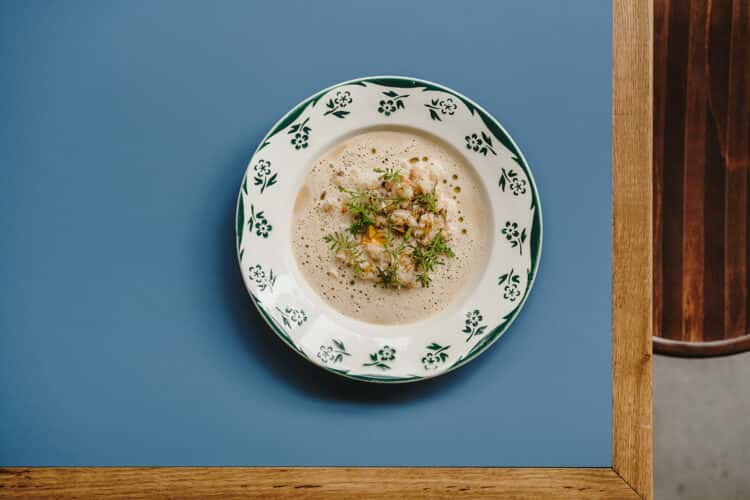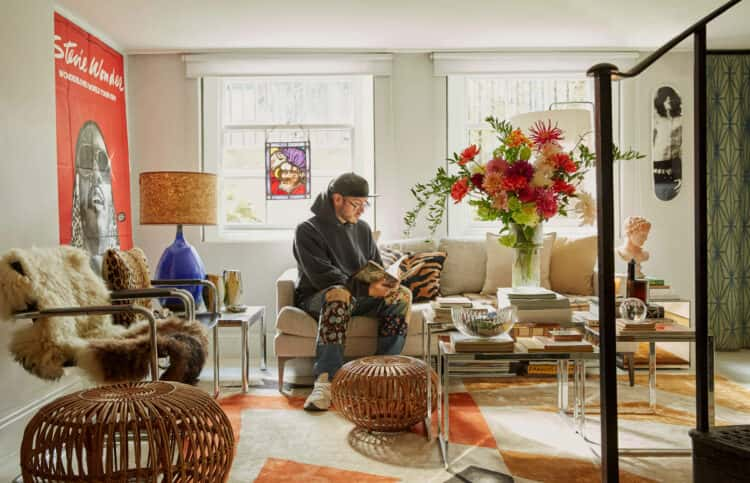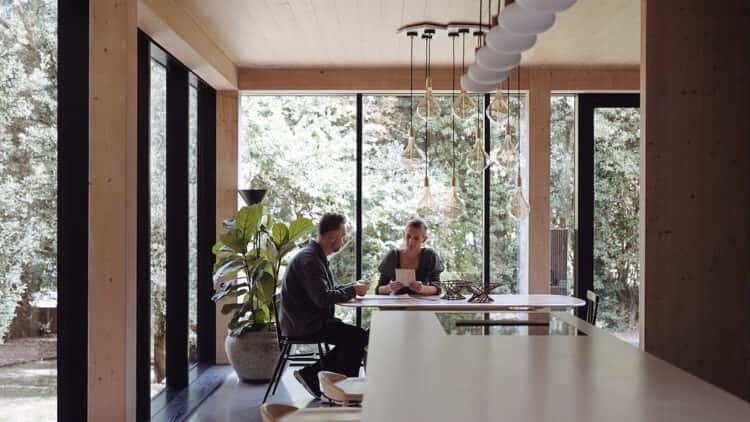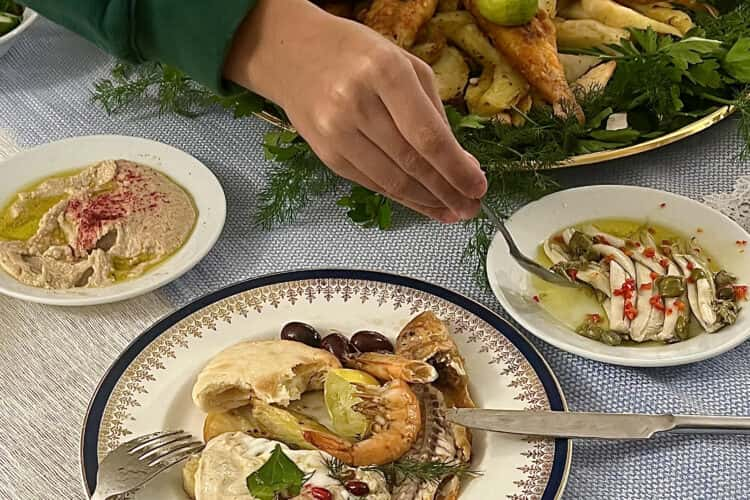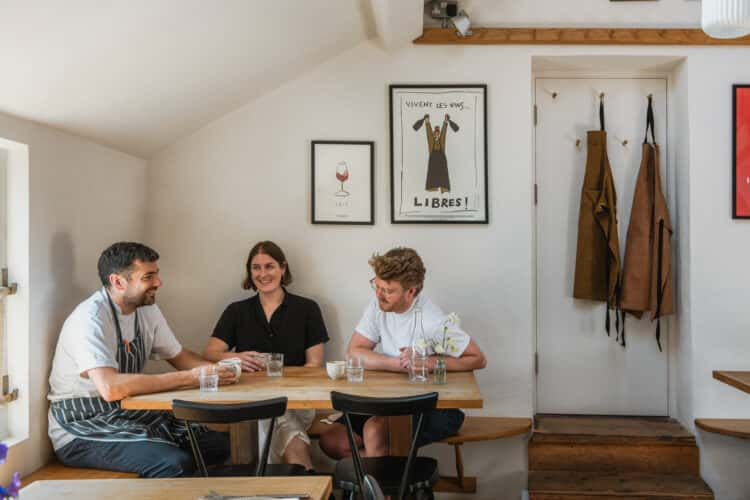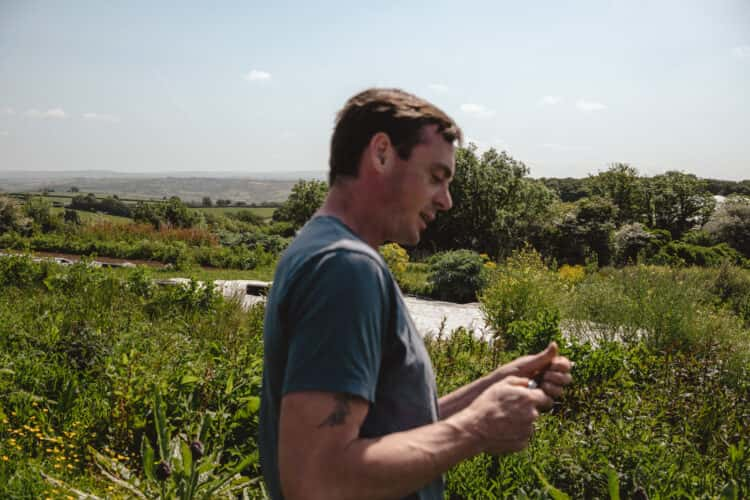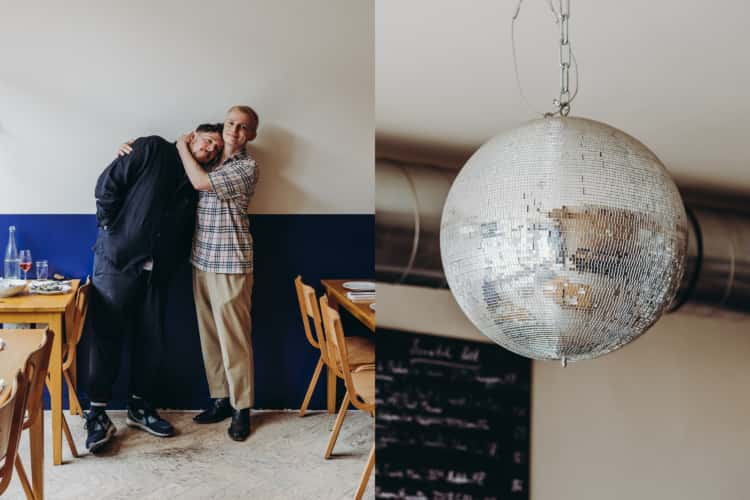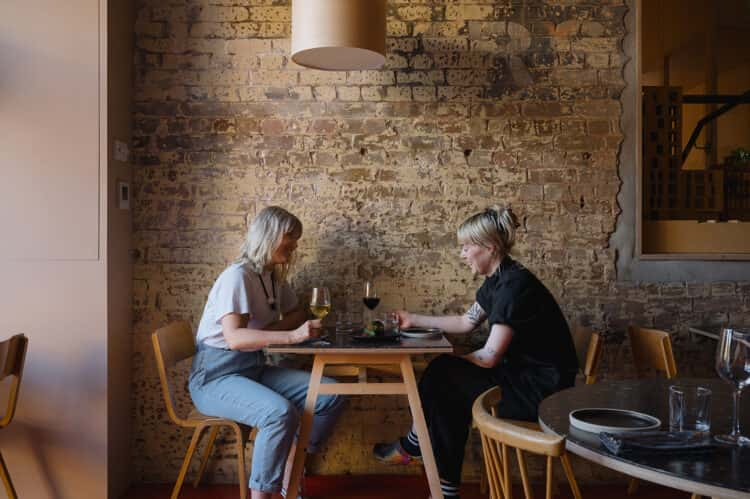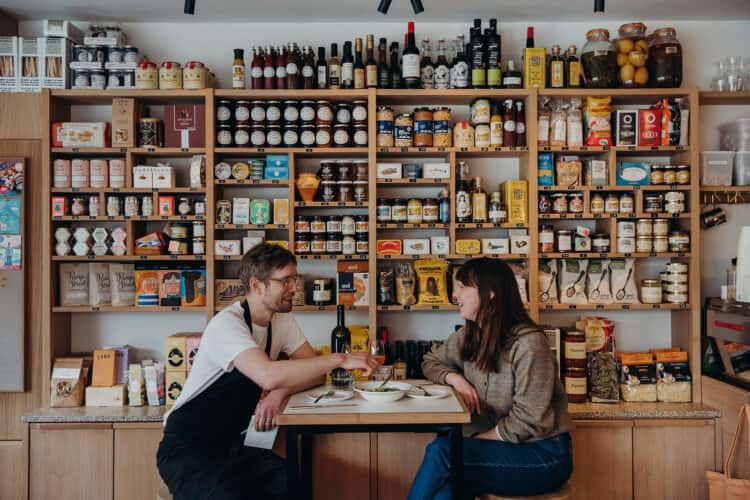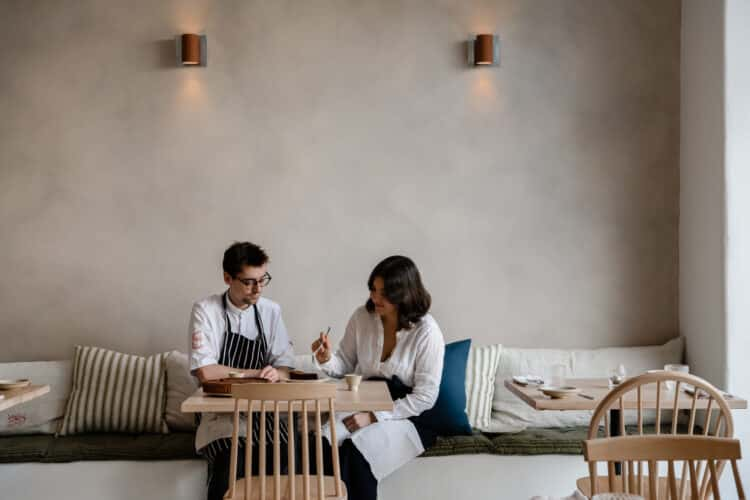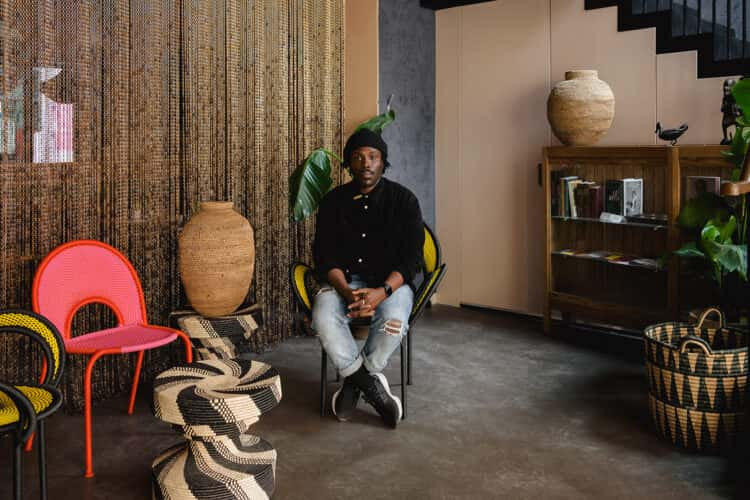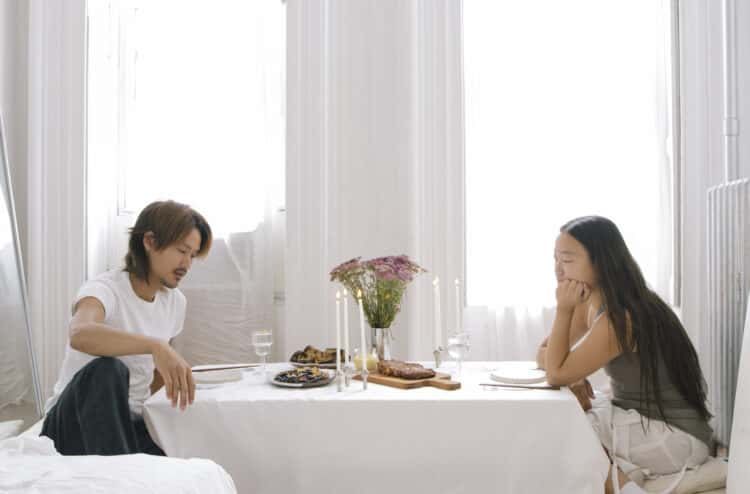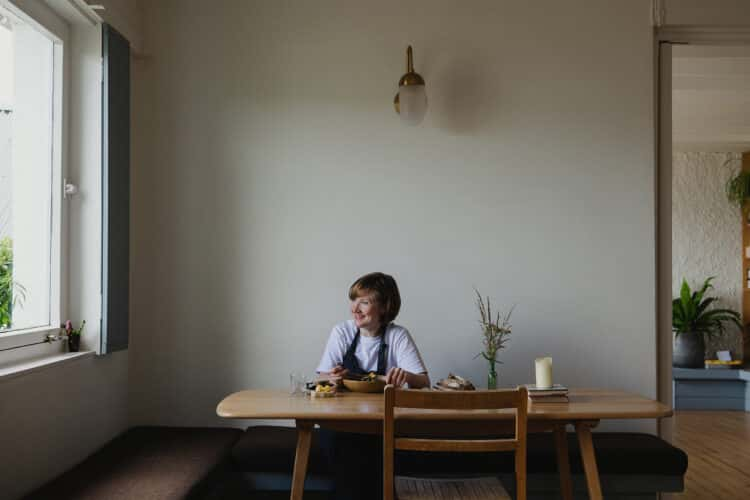The meeting of four minds at Cadet in Newington Green, north London
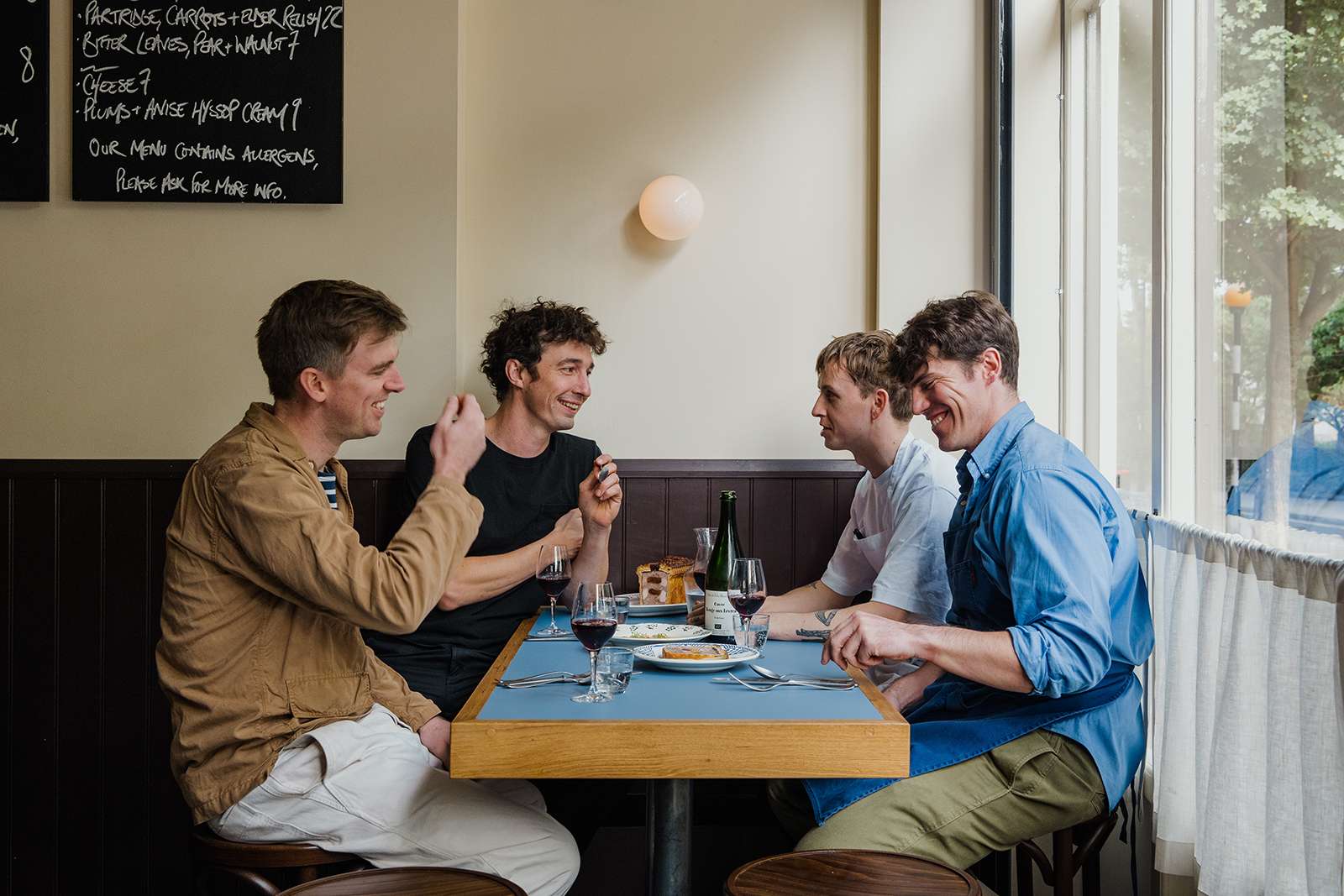
Words Billie Brand
Photography Elliot Sheppard
Production Harry Cave
Cadet has only been open since the summer, but it already has the feel of a much-loved local. There are always plenty of regulars sitting at the tall pastel-hued Formica tables, as well as visitors venturing in from further afield. But that’s hardly surprising, given the team’s formative experience. Jamie cut his teeth at Brawn, Lyle’s and St John, as well as Auberge de Chassignolles in France, before a stint manning the kitchen at P. Franco. Tom previously managed the latter, while Francis worked at Western’s Laundry and Bright before the pair founded their import business, Beattie & Roberts, four years ago. George, meanwhile, has been busy with his own French charcuterie business. Here we find out how the four of them each fell in love with their crafts and then came together to create Cadet.
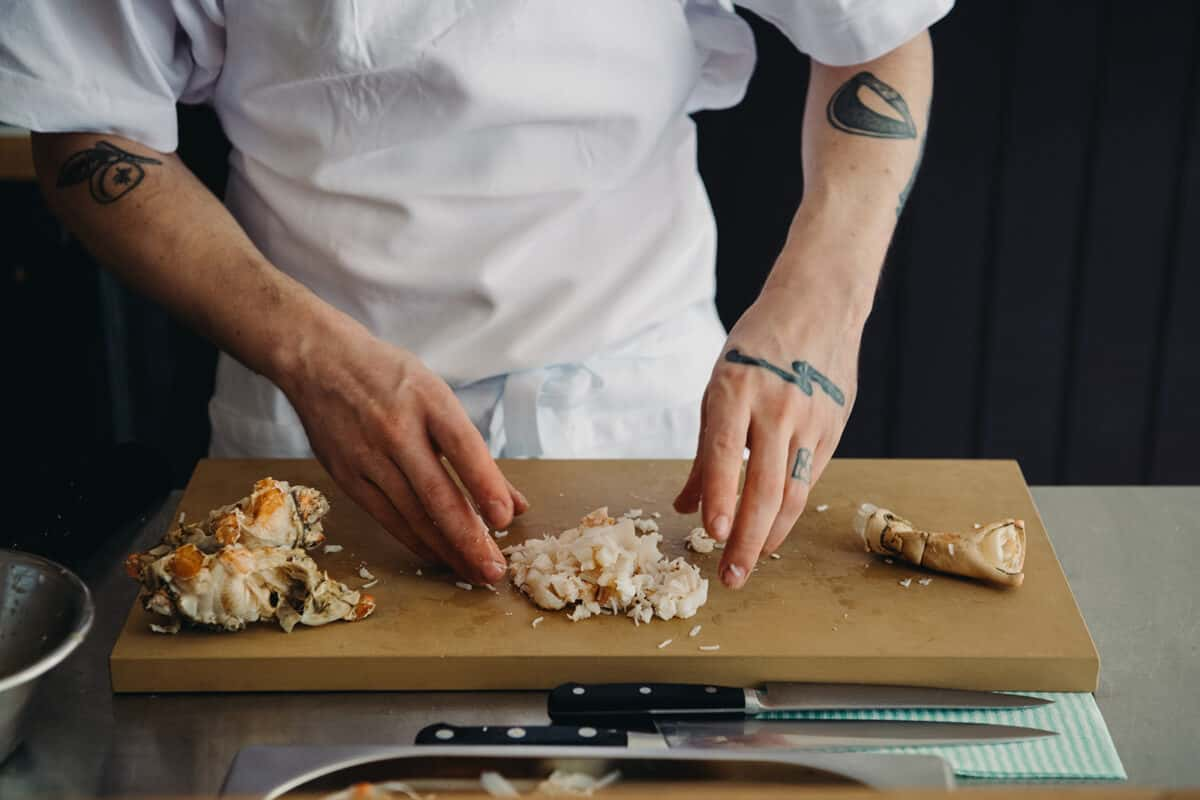
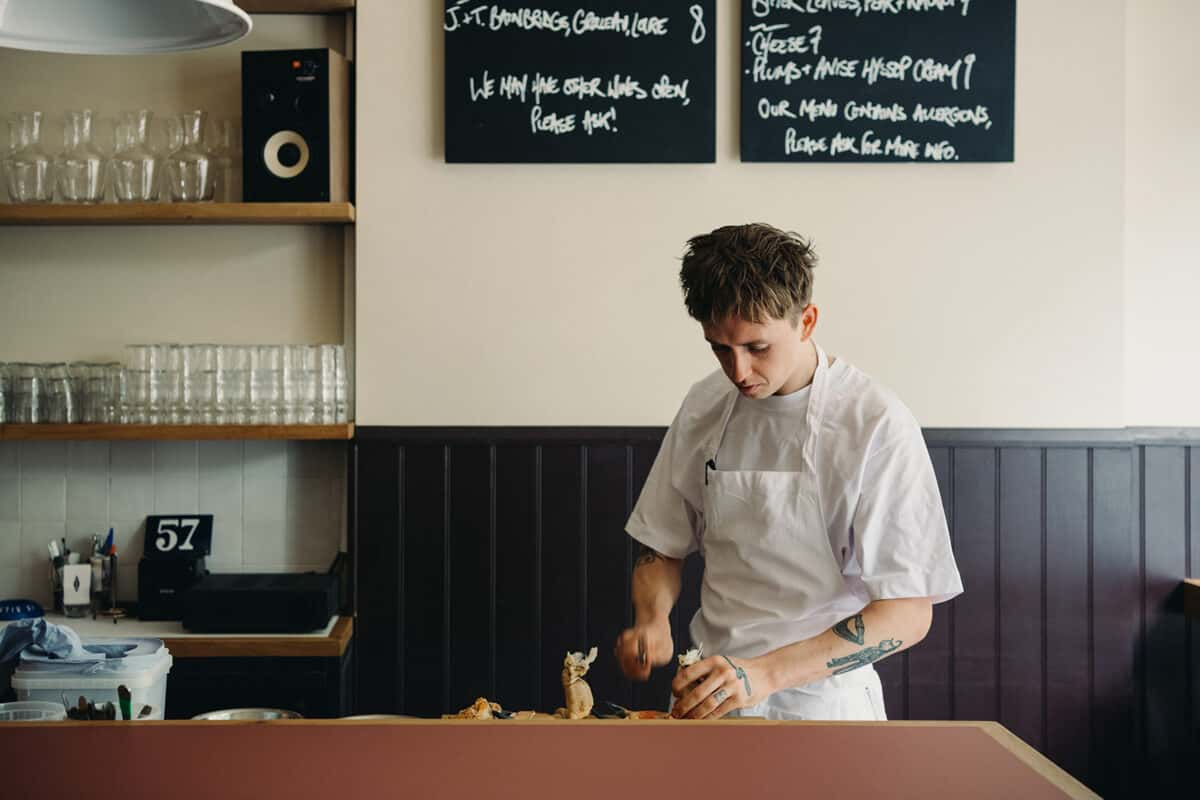
George: “I’ve been obsessed with food since I was a teenager. The majority of my family are French and live in France, and my dad, who is English, loved French cooking. He had wanted to open a restaurant when he was younger. When I was growing up, he was always making things like terrine and parfaits. When I was about 14, I turned vegetarian when I became concerned about the treatment of animals.
“But as I got more into food, I realised that, actually, if the welfare was good and the husbandry was proper, then there was no reason not to eat meat. That, along with Fergus Henderson’s book, Nose to Tail Eating, which we had at home, got me into the idea of that style of cooking. I then worked at River Cottage briefly, which cemented my desire to pursue a career in food. I worked in a cheesemonger, a fishmonger and a butcher, where I stayed for 10 years. Then I decided to learn about charcuterie – and that’s a lifelong task. There’s still so much to master.”
Jamie: “When I grew up, my parents – especially my dad – were always cooking. But it wasn’t until I left school that I fell into working in kitchens and became obsessed. I really wanted to excel at whatever I was going to do and liked the idea of dedicating my life to mastering a craft – that’s what led me to cooking.
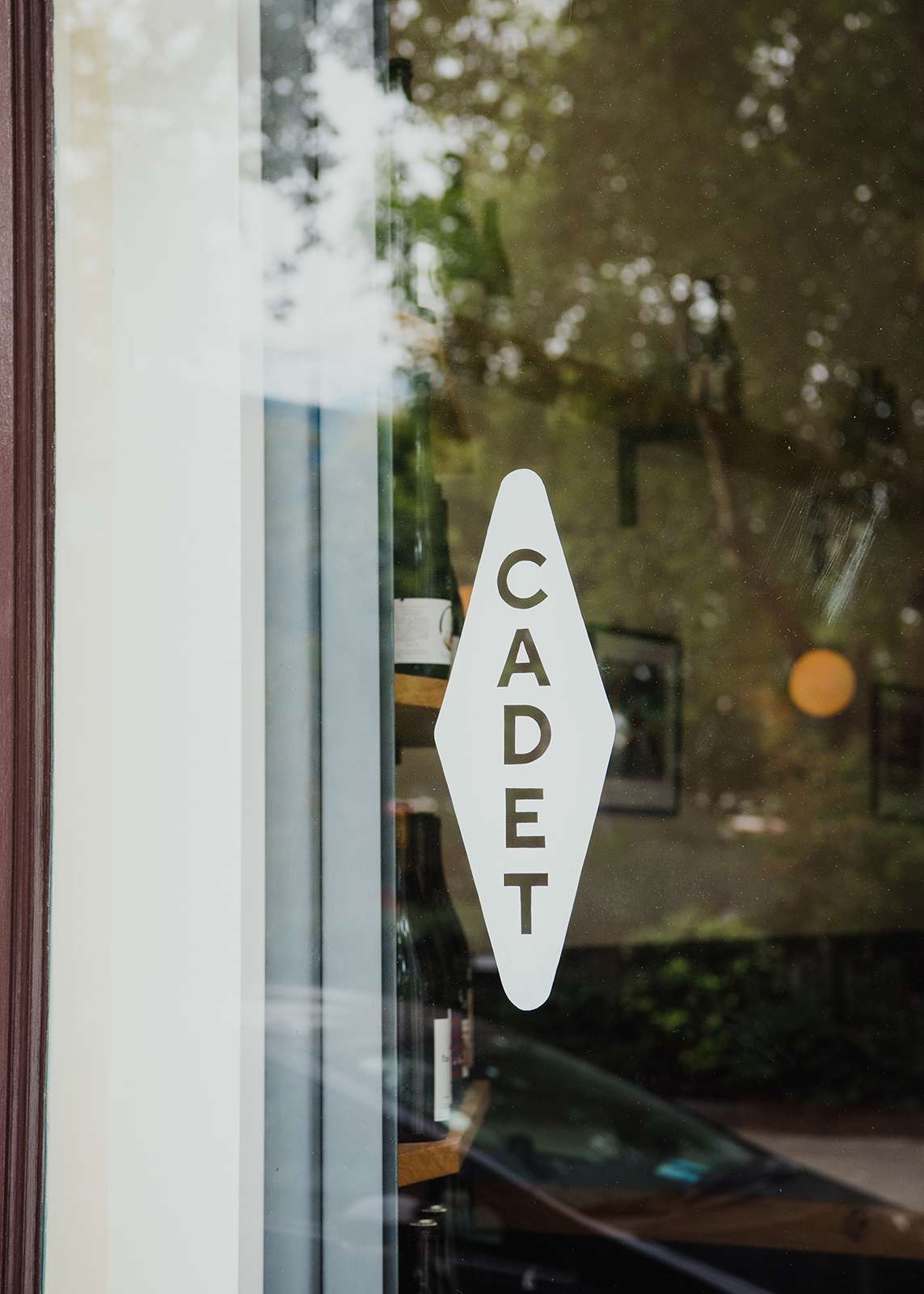
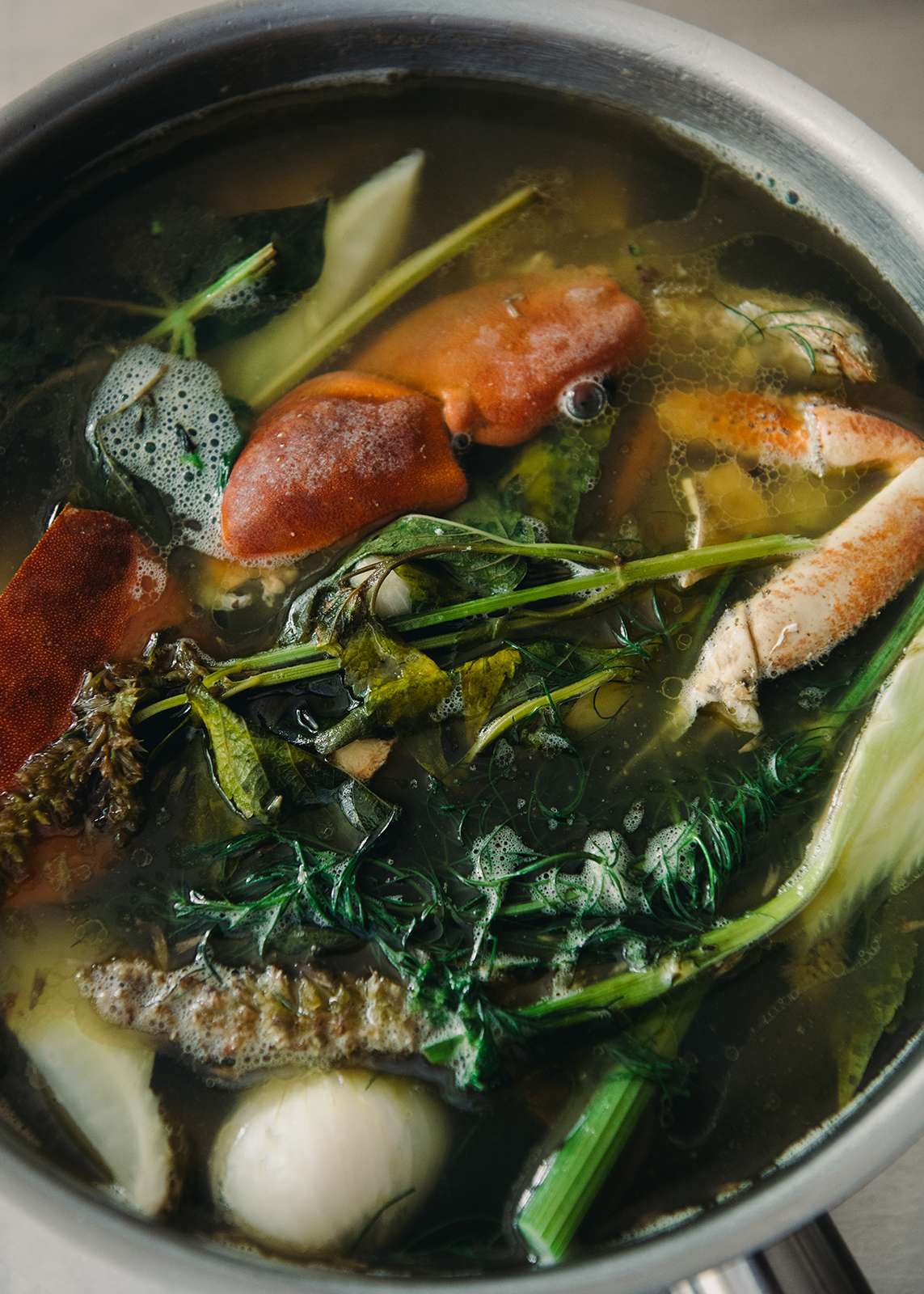
“I’m from the countryside in the south-west, which has had a really big influence on my food today. What I do now takes the same limitations and ethos as provincial French and British countryside cooking: preserving when there’s an abundance and focusing on each individual ingredient.”
Francis: “I fell in love with wine when I started working in restaurants. My first job was at the Anchor & Hope in Southwark, where the owners, Rob Shaw, who came from St John, and Harry Lester, who later founded 40 Maltby Street, always had natural wine on the list – that’s what piqued my interest. I never fancied going down the sommelier route. Instead, I worked in more casual places, where I was trusted by the owners to write the wine list.
“I later met Tom at P. Franco. We both wanted to work more directly with producers and that’s when we had the idea to start importing together.”
Tom: “I grew up with wine. My father made it in Australia and distributed barrels from France. I would help pick the grapes, although as an 11 year old, I didn’t look forward to it. But I later reconnected with wine in my early 20s. I took a more formal career route into it than Francis and studied it.
“When I was running the wine list at P. Franco, I became obsessed. We would fly to Rhône or Languedoc to spend time with winemakers there, who are so passionate. I found that very inspiring and that’s when I realised the potential of importing. Then I met Fran and we met George and Jamie and it all just made sense to work together at Cadet. We have so many overlapping experiences and connections.”
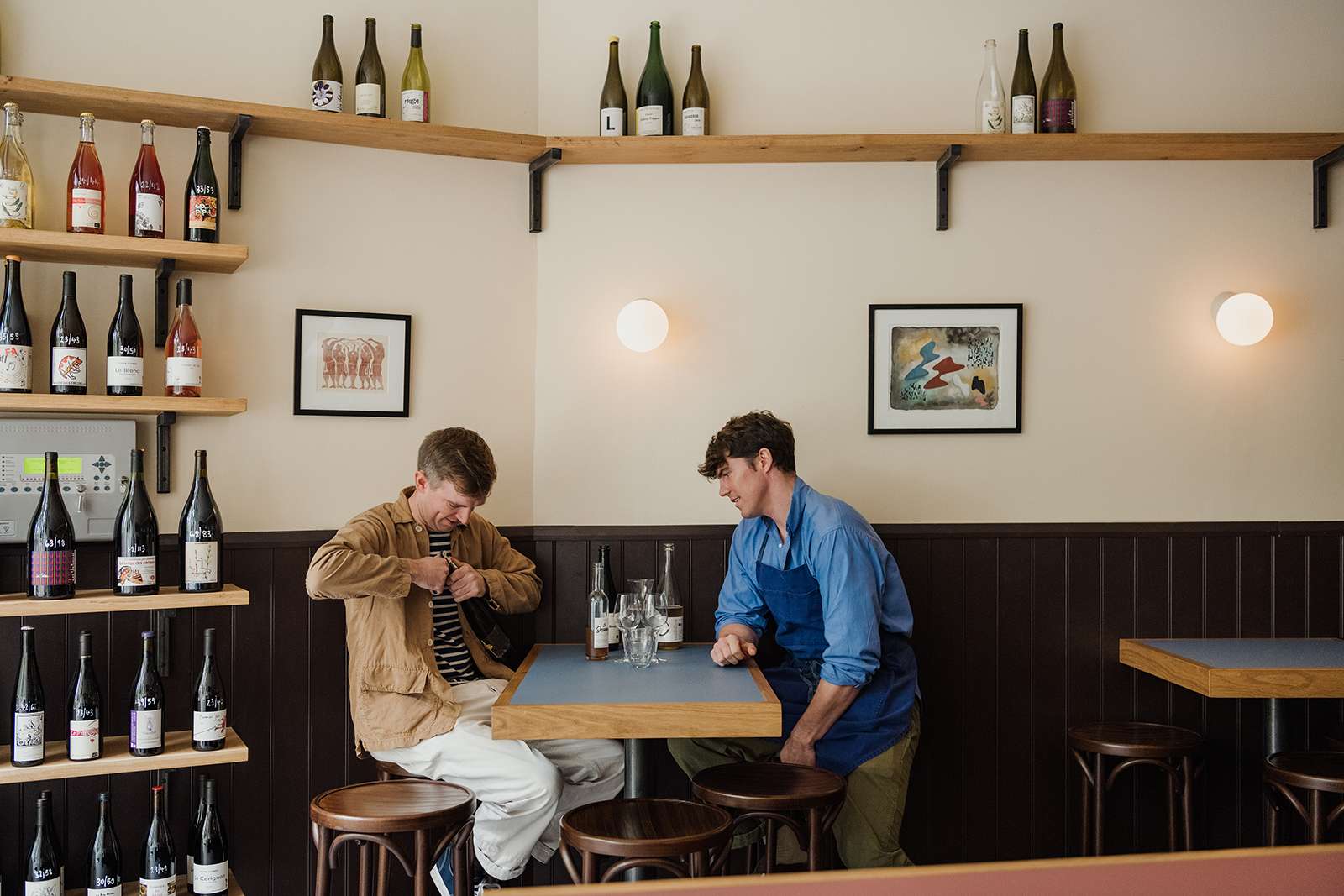
Francis: “Since we’ve opened this place, we’ve been on a journey of discovery. We’re all experienced in working in restaurants, but this is all our first time running our own. We’ve been figuring things out as we go along, adapting to the rhythm of the place. It’s been tiring – but a lot of fun.”
George: “I’d been trying to open a charcuterie shop on Newington Green for a fair few years. There hadn’t been a butcher or charcutier here for a long time and so it felt right. However, for years my dream was also to open a local bistro-style spot, where people could just roll up. When I finally found this place, I wondered whether I could run it on my own – but then I met Fran and Tom at P. Franco and we just got talking…”
Francis: “… George made us some sausages…”
George: “… And we just clicked straight away. Wine and charcuterie is the perfect combination. We went to Paris together and ate and drank lots of nice things.”
Francis: “We then needed a chef to complete the picture and Jamie was at the top of our list. We’d all been working in similar circles.”
Jamie: “Before I started at P. Franco, I was speaking to my partner about what the best possible outcome for me afterwards would be. We decided that the ideal situation would be to open a small restaurant with a natural-wine importer. Francis, Tom and George share the same ethos as me towards farming, suppliers, and producers – and they enjoy the same sorts of food that I do. It’s been dreamy having George create charcuterie that completely matches my cooking.”
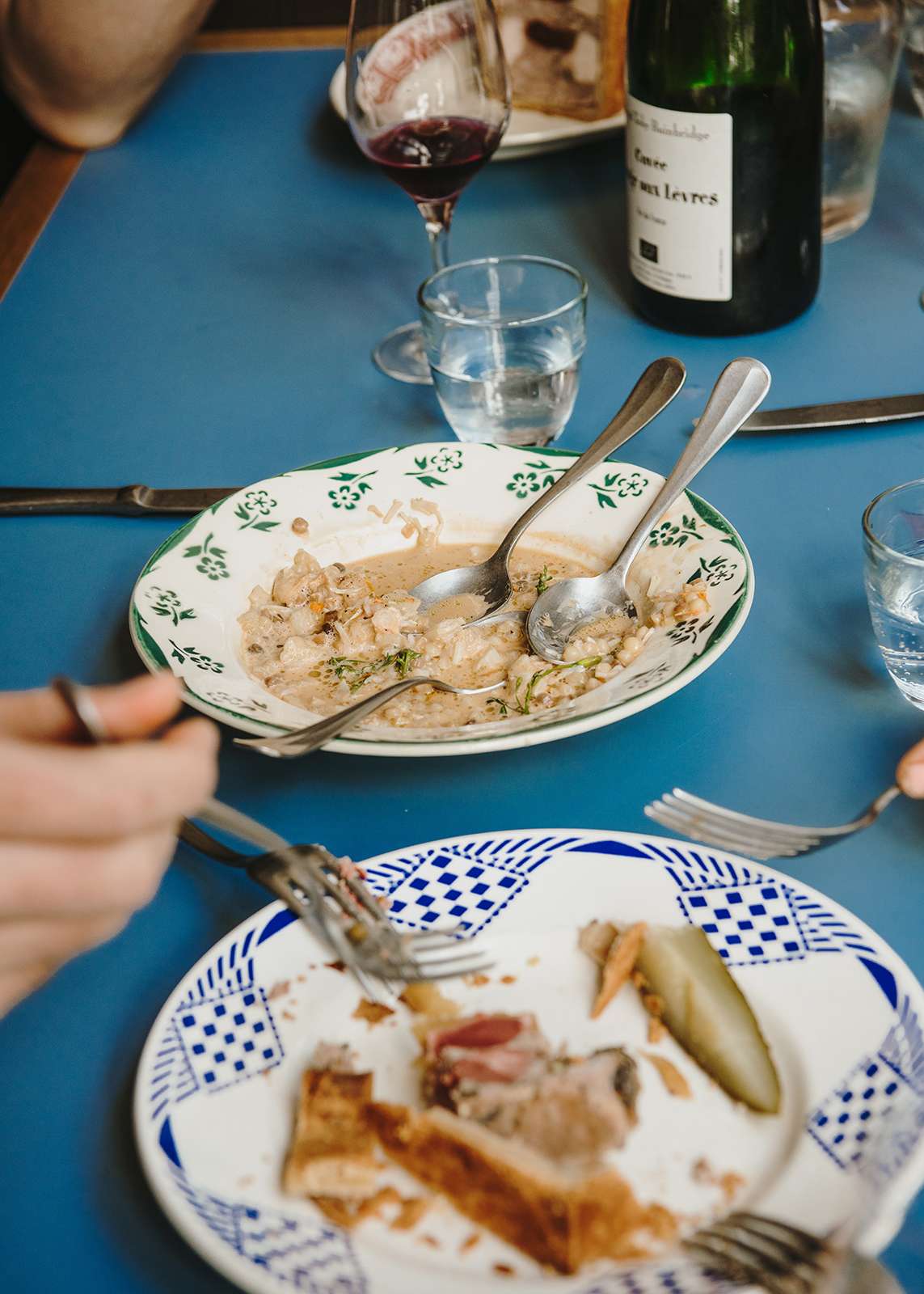
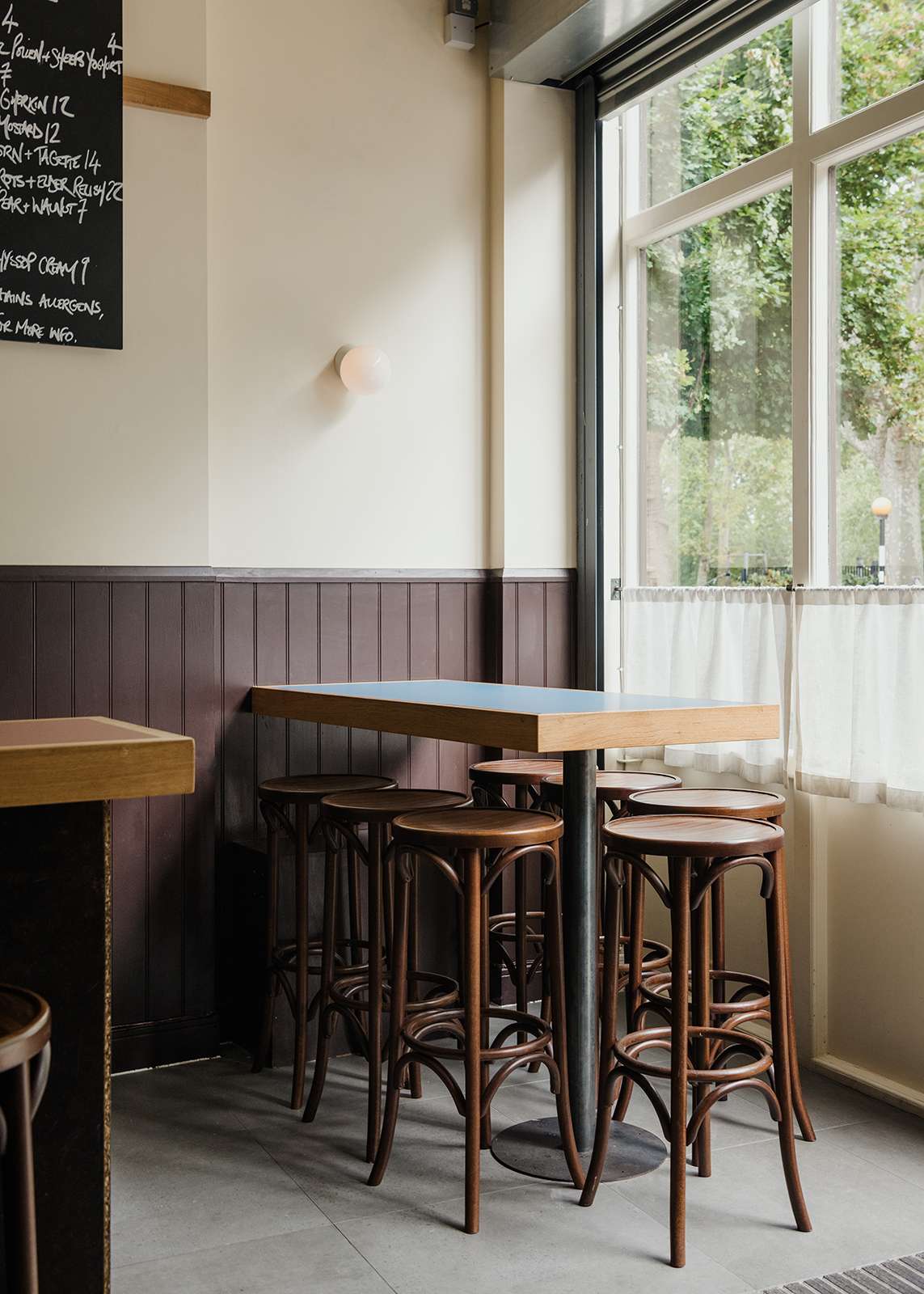
George: “What we are doing here is very different to anyone else in the area. We make the charcuterie and import wine directly from farmers. There’s no middleman with what we do and I think that’s quite special.”
Tom: “The knowledge between us about our produce is great – and being able to communicate that with our guests is really fun.”
Francis: “Outside of the restaurant, I like going to Stoke Newington’s Growing Communities farmers’ market on a Saturday morning with my partner. We buy vegetables for the week and then eat quite simply at home.
“But in terms of restaurants, I really like Planque. We recently all went for a celebratory meal there. The team there are very good friends of ours. The food was fantastic and the wine list is incredible. I think we’ll be going back there again soon.”
Jamie: “When I’m not eating at Chinese restaurants, I like to cook really simple things that don’t take a lot of time. I live near a great fishmonger, so I make the most of that.”
George: “I don’t cook much at home because I graze a lot here. But when it comes to eating out, I like places that are relaxed and not very grand. I love Trangallan, round the corner. That’s almost exactly what I look for in a restaurant. It’s lovely people doing their own thing, serving great Spanish tapas. When you spend all day with food, you just want something convenient.
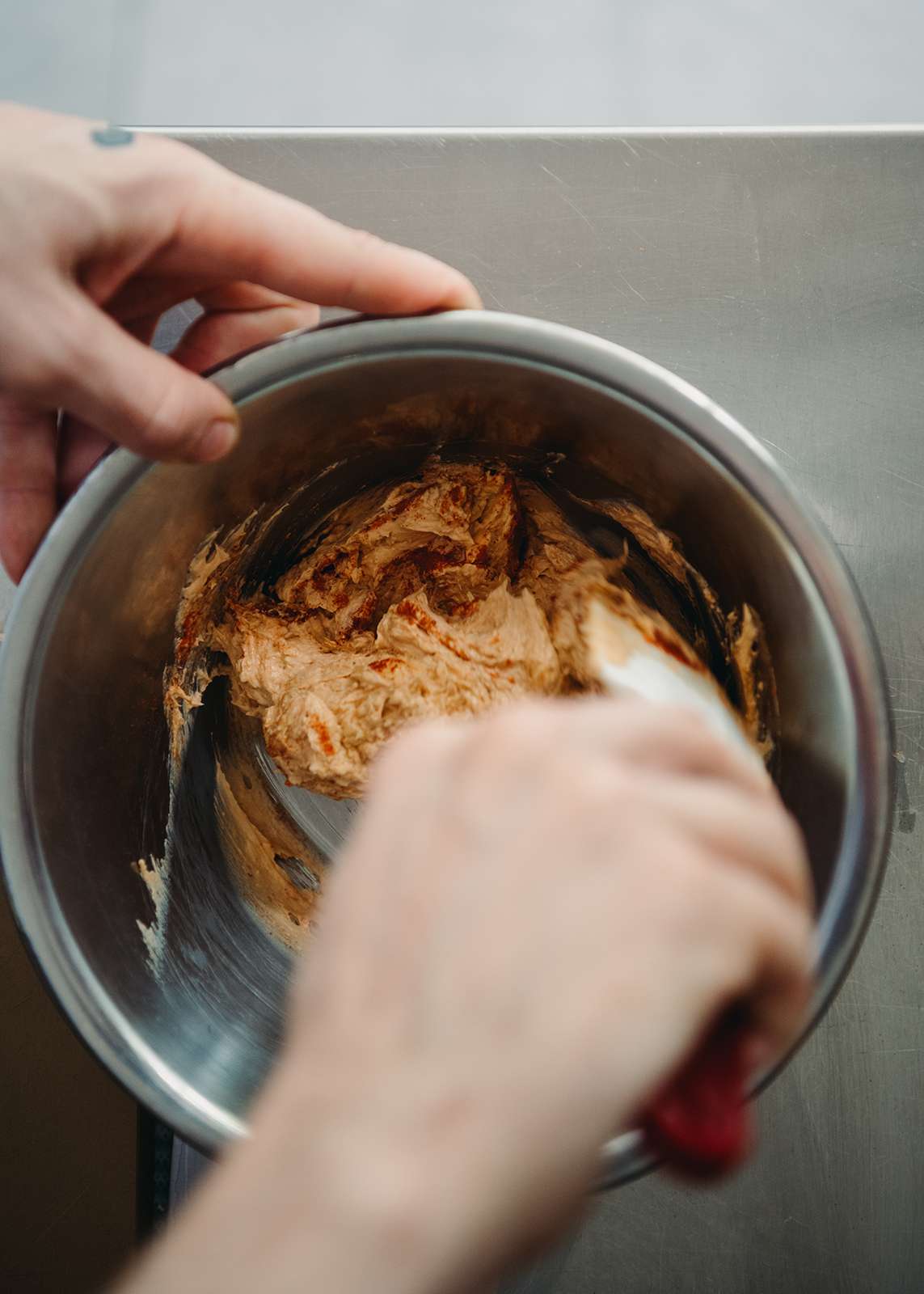
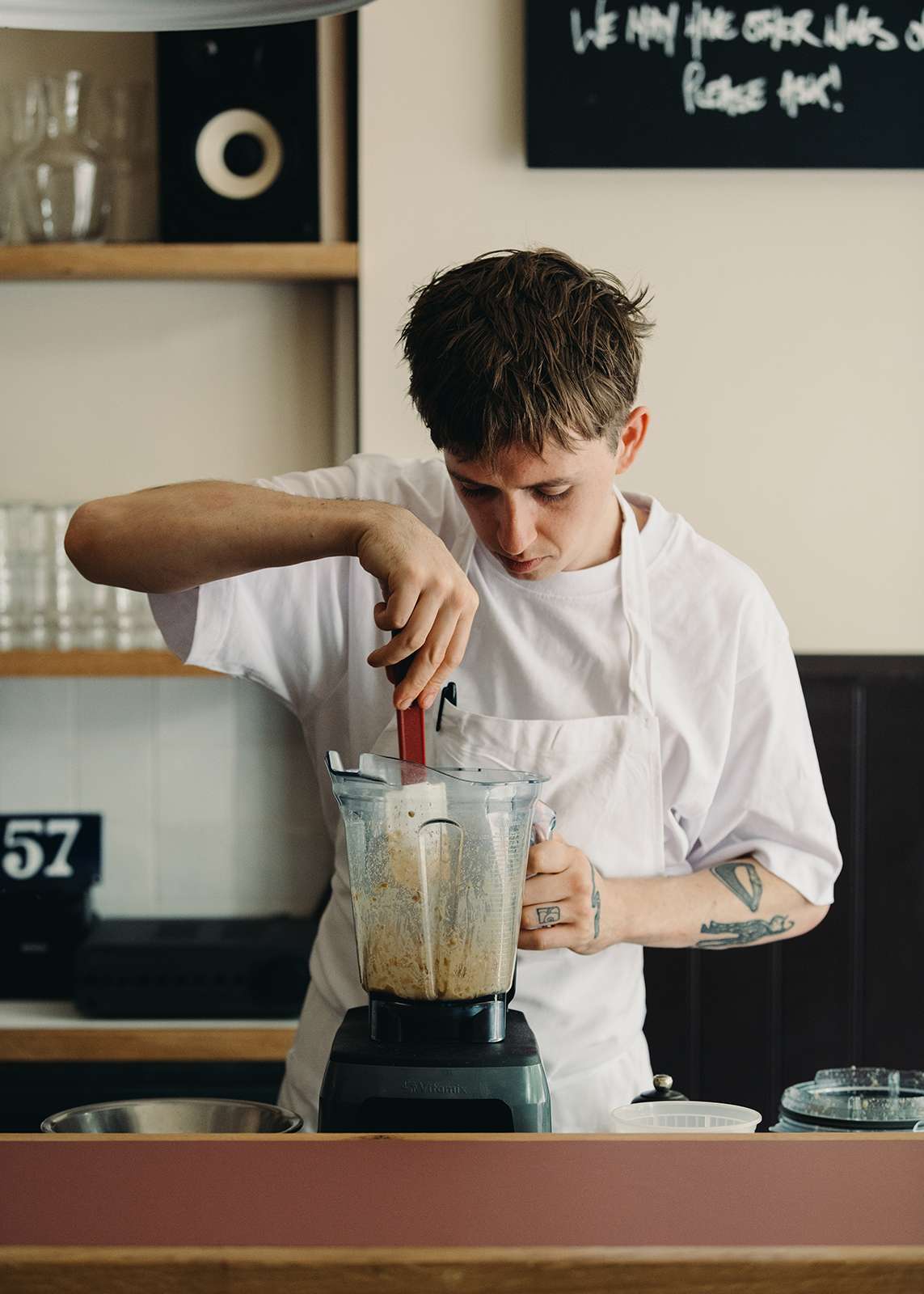
“That said, now it’s autumn, that changes slightly. This time of year is my favourite for food, because it’s when mushrooms are in season and it feels better to eat heavier things. And I’ll probably start going to places like St John more too.
Tom: “I like to go to St John on Mondays. Once 1pm ticks around and I’ve dealt with the wine orders, I tend to ride down on my bike and have a beer and some food and read a book – just for an hour or so. It’s really lovely. I can sit in the bar and no one bothers me. I find it really soothing.”
George: “We’re really looking forward to doing some fun projects at Cadet. We want to get the most out of the farms we’re working with, while produce is bounteous, preserving for the cooler months ahead. We have plans to create a small herb garden here and maybe keep some bees – these are the kinds of conversations we have every day.”
Tom: “I think there’s more collaboration between the four of us to come that we’ve not yet tapped into. There’s lots to do.”
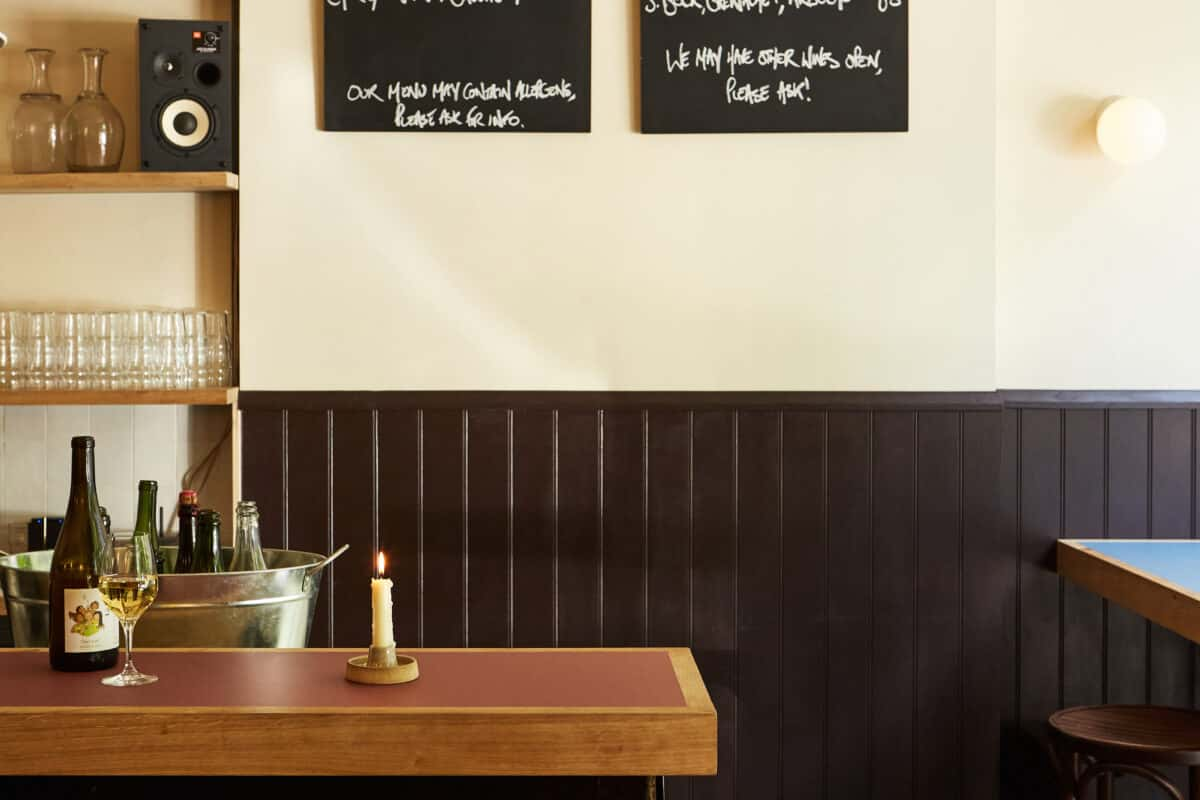
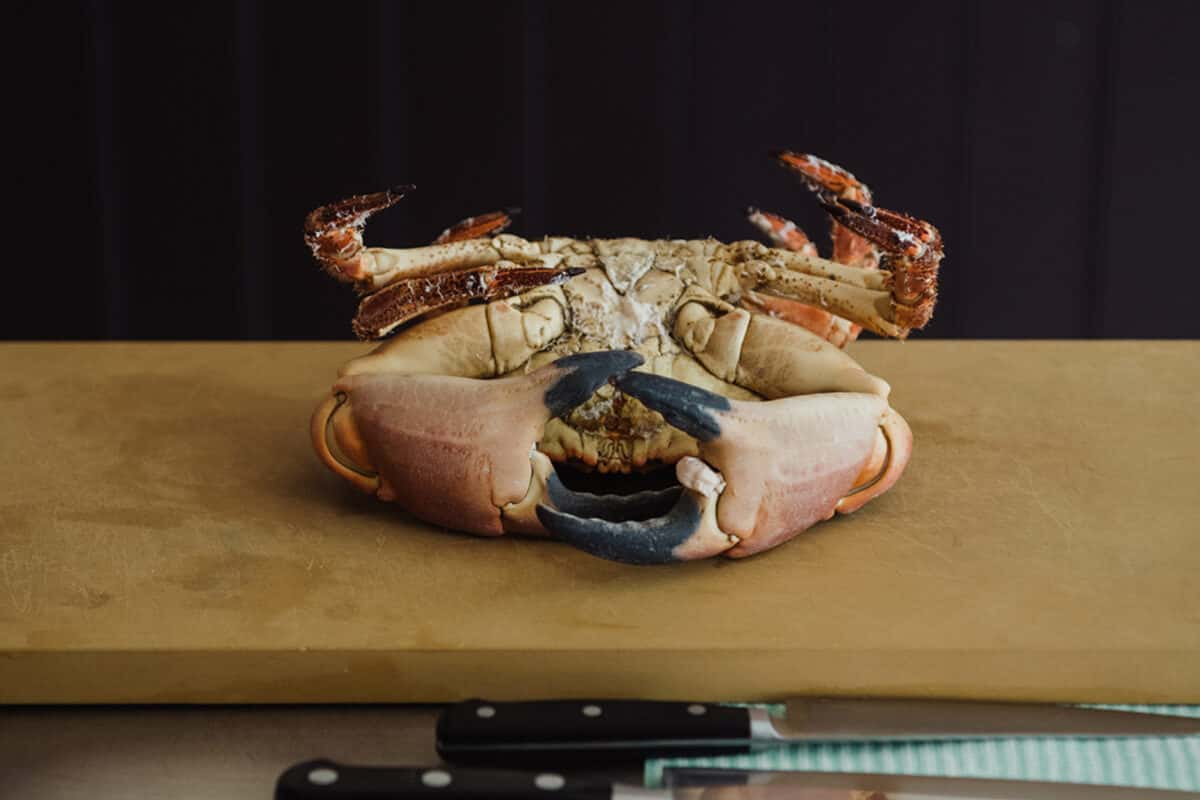
Serves 2
1 whole cooked Cornish brown crab, approx 800g
For the stock
100ml pastis
100ml white wine
1 fennel head
2 shallots
3 garlic cloves
A few springs of anise hyssop
1 stem of parsley with leaves
1 stem of basil with leaves
2 San Marzano tomatoes
For the spiced brown-crab butter
Brown head meat from the whole crab
Butter at room temperature, weight dependent on crab meat
Black pepper
½ tsp white pepper
¼ tsp cayenne
½ tsp hot smoked paprika
100g fregola
To finish
Freshly picked tagete herb (or tarragon)
Black pepper
Extra virgin olive oil
Firstly, turn the crab so its underside is facing upwards. Twist off the claws and set aside in the fridge until later. While holding the crab downwards, press down with your thumbs to release the body section of the crab and discard the lungs. If the body and smaller legs are big enough to pick meat from, do so and reserve with the claws. If not, they’ll add a wonderful flavour to the stock.
With a spoon, gather all the brown meat from the head and reserve for the spiced butter. Crack the claws and remove the white crab meat. Do the same with the legs, if using, and the body if you choose to and gather all the shell.
To make the stock start by crushing the shell in a wide-bottomed pan. Add a splash of vegetable oil and start to roast the shell on a medium to high heat. Once it’s fragrant and you’ve started to lightly colour the bottom of the pan, pour in the pastis and white wine. Allow to reduce by half before adding the vegetables and herbs, then cover with boiled water. Simmer for two hours before straining.
To make the spiced butter, weigh the brown crab meat and place it with the same amount of butter into a food processor and add the spices. Blitz till smooth then refrigerate.
Boil the fregola in salted water for approximately 12 minutes and refresh in ice water. The pasta should still have a little bite. Drain and set the pasta aside. If you don’t have access to a deli that stocks fregola, you can substitute it with some old bread, torn and left to try slightly.
Heat 500ml of your stock and, with a stick blender, blitz in the spiced brown-crab butter. Season with salt and additional spicing to your taste. The cayenne should give a background hum, rather than an aggressive heat.
In a separate pot, warm the fregola (or bread) with a splash of the finished broth and, once it has time to absorb, add the picked white crab meat to the pot. Spoon into a serving bowl and give the broth a final whizz with the stick blender to aerate and fill the bowl. Finish with a final crack of black pepper, picked tagete herb and a drizzle of extra virgin olive oil.
